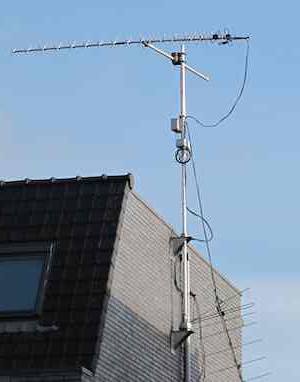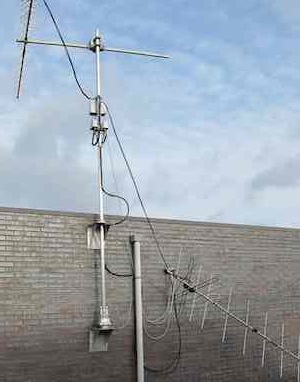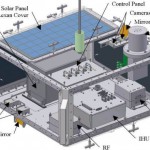 Reception reports indicate that ARISSat-1/KEDR has stopped transmitting on Wednesday, January 4, 2012. The last full telemetry captured and reported to the ARISSatTLM web site at 06:02:14 UTC on January 4 were received from ground stations as the satellite passed over Japan.
Reception reports indicate that ARISSat-1/KEDR has stopped transmitting on Wednesday, January 4, 2012. The last full telemetry captured and reported to the ARISSatTLM web site at 06:02:14 UTC on January 4 were received from ground stations as the satellite passed over Japan.
See: http://www.arissattlm.org/live (full telemetry display)
See: http://www.arissattlm.org/mobile (condensed telemetry)
Telemetry reports showed that the temperature aboard ARISSat-1/KEDR had been rising as atmospheric drag began to affect the satellite. Final temperatures received via ARISSatTLM reported this data:
IHU 75 ° C / 167.0 ° F
PSU 76 ° C / 168.8 ° F
RF 88 ° C / 190.4 ° F
Control Panel 61 ° C / 141.8 ° F
Experiment 64 ° C / 147.2 ° F
Tracking data from Space Command gave a Predicted Decay Time 0700 GMT +/- 3 Hours on January 4. Telemetry report narrows the impact time window to about 4 hours. The predicted decay location is 12.7° S, 354.3° E, an open part of the South Atlantic, well west of Angola. Send reports to the amsat-bb If you heard the satellite, even briefly, after 0600 UTC. This will help confirm the actual impact point.
Stations receiving telemetry from ARISSat-1 at any time over the last few months, please forward all of your .CSV telemetry files to telemetry AT arissattlm.org.
The Official ARISSat-1/KEDR web page: http://www.arissat1.org/ See DK3WN SatBlog for last signal report received by Tetsu san, JA0CAW in Japan: http://www.dk3wn.info/p/ p=25125
[PE0SAT thanks the ARISSat-1/KEDR Team for the above information]
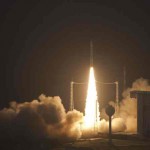 The first Vega, flight VV01, lifted off at 1000 UT from the ESA Spaceport at Kourou in the Caribbean carrying eight student built amateur radio satellites and the LARES Laser Relativity Satellite into orbit.
The first Vega, flight VV01, lifted off at 1000 UT from the ESA Spaceport at Kourou in the Caribbean carrying eight student built amateur radio satellites and the LARES Laser Relativity Satellite into orbit.
 Project ELaNa, NASA’s “Educational Launch of NanoSat” managed by the Launch Services Program at the Kennedy Space Center, announced on February 10 that the AMSAT Fox-1 cubesat has been selected to join the program. AMSAT will work with NASA in a collaborative agreement where NASA will cover the integration and launch costs of satellites deemed to have merit in support of their strategic and educational goals.
Project ELaNa, NASA’s “Educational Launch of NanoSat” managed by the Launch Services Program at the Kennedy Space Center, announced on February 10 that the AMSAT Fox-1 cubesat has been selected to join the program. AMSAT will work with NASA in a collaborative agreement where NASA will cover the integration and launch costs of satellites deemed to have merit in support of their strategic and educational goals.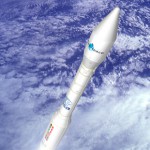 Vega is scheduled to launch on February 13, at 1000 UTC with eight student built amateur radio satellites.
Vega is scheduled to launch on February 13, at 1000 UTC with eight student built amateur radio satellites. 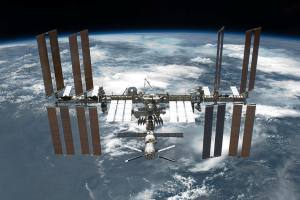 U.S. Space Command recommended the space station perform a debris avoidance maneuver on Friday, January 13, 2012 to move out of harms’ way and dodge a possible collision with the piece of space junk, said to be about 10 centimeters in diameter. The thrusters on the Zvezda service module fired at 1610 UTC on Friday to raise the orbit of the ISS.
U.S. Space Command recommended the space station perform a debris avoidance maneuver on Friday, January 13, 2012 to move out of harms’ way and dodge a possible collision with the piece of space junk, said to be about 10 centimeters in diameter. The thrusters on the Zvezda service module fired at 1610 UTC on Friday to raise the orbit of the ISS. Reception reports indicate that ARISSat-1/KEDR has stopped transmitting on Wednesday, January 4, 2012. The last full telemetry captured and reported to the ARISSatTLM web site at 06:02:14 UTC on January 4 were received from ground stations as the satellite passed over Japan.
Reception reports indicate that ARISSat-1/KEDR has stopped transmitting on Wednesday, January 4, 2012. The last full telemetry captured and reported to the ARISSatTLM web site at 06:02:14 UTC on January 4 were received from ground stations as the satellite passed over Japan.